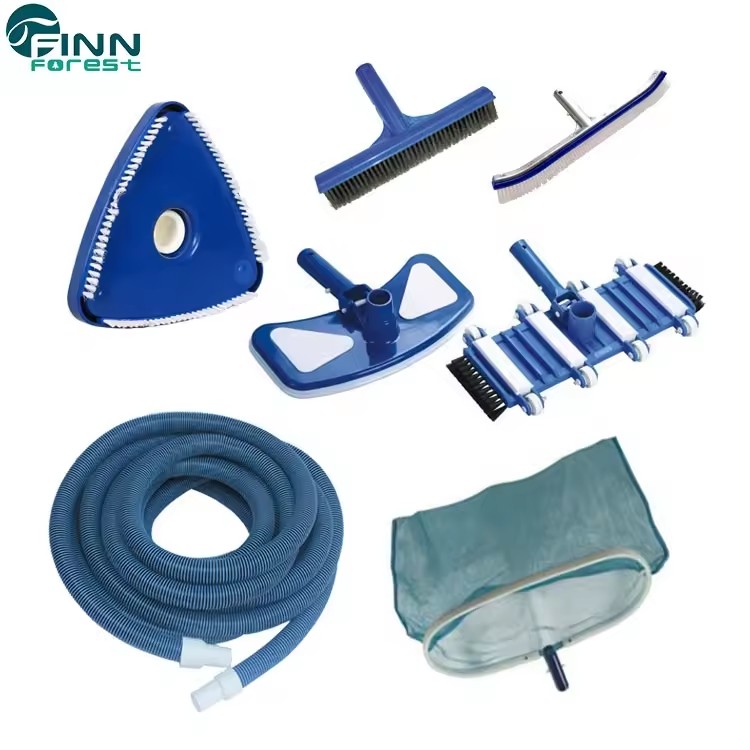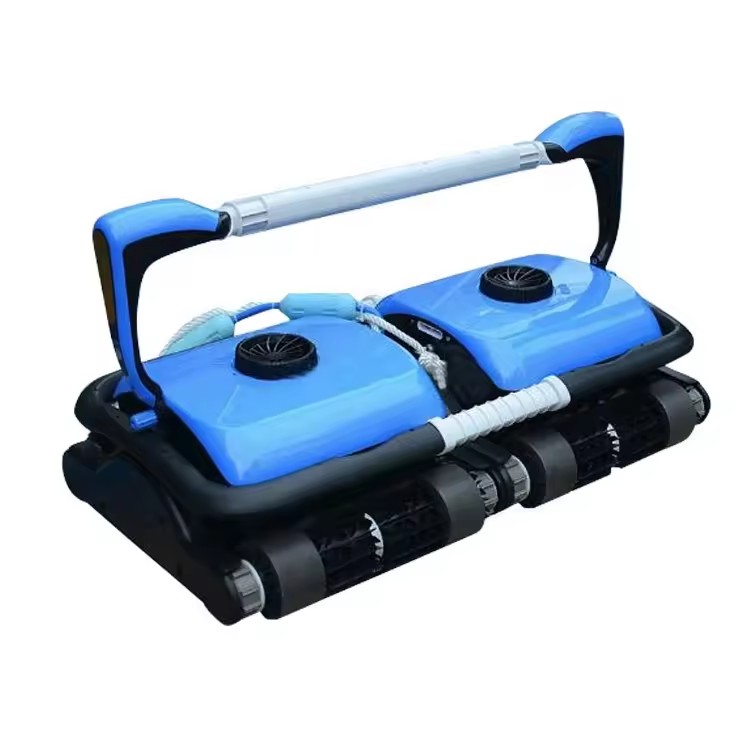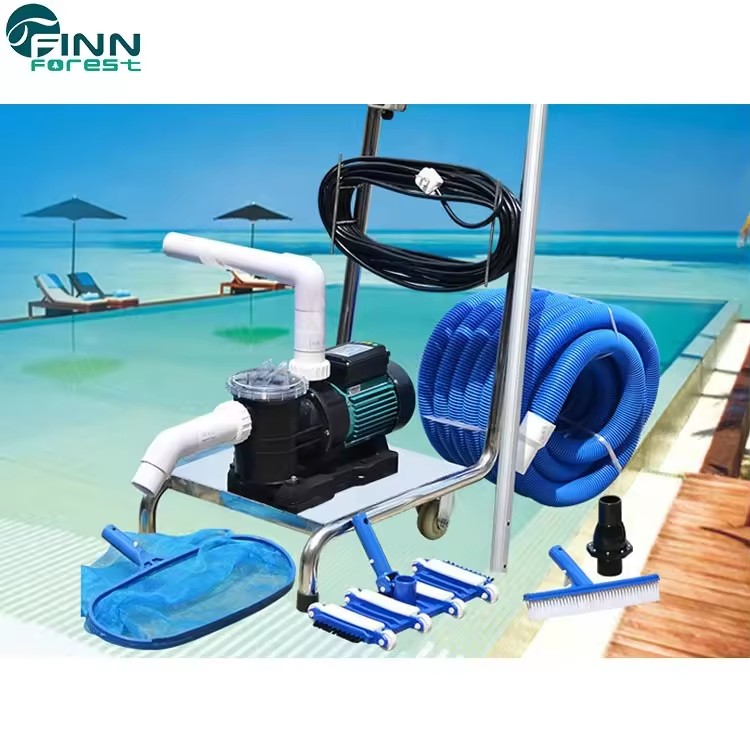
Cleaning a swimming pool involves a combination of manual cleaning, chemical treatments, and routine maintenance to keep the water clear, safe, and inviting.

1. Skimming the Surface
Tools Needed: Skimmer net or leaf net
Steps: Use the skimmer net to remove floating debris such as leaves, bugs, and other debris from the surface of the water. Skim the pool daily or as needed, especially after storms or windy conditions.
2. Brushing the Pool Walls and Floor
Tools Needed: Pool brush (nylon or stainless steel depending on your pool surface)
Steps: Brush the walls, steps, and floor of the pool to remove algae, dirt, and grime that accumulate over time. Start from the top and work your way down to the bottom of the pool, focusing on areas with low circulation such as corners, steps, and ladders. For plaster, concrete, or tile pools, use a stiff brush, for vinyl or fiberglass pools, use a soft brush to avoid damage.
3. Vacuuming the Pool
Tools Needed: Manual pool vacuum or automatic pool cleaner
Steps: Manual Vacuum: Attach the vacuum head to the pole, connect the hose, and submerge the vacuum in the pool. Once the vacuum hose is primed (filled with water), vacuum the pool floor thoroughly, moving slowly to avoid stirring up debris. Automatic Pool Cleaner: If you have a robotic or suction-side cleaner, set it up and let it clean the pool automatically. These cleaners are effective for regular maintenance but may require manual vacuuming for deep cleaning.

4. Cleaning the Pool Filter
Types of Filters: Sand, Cartridge, or Diatomaceous Earth (DE)
Steps: Sand Filter: Backwash the filter to remove debris and contaminants. After backwashing, set the valve to “Rinse” to settle the sand. Cartridge Filter: Remove the cartridges and rinse them with a garden hose. Soak the cartridges in a filter cleaner solution periodically for a deep clean. DE Filter: Backwash the filter and recharge it with fresh DE powder according to the manufacturer’s instructions.
5. Checking and Balancing Pool Water Chemistry
Tools Needed: Water test kit or test strips
Steps:Test the pool water for pH, alkalinity, chlorine, calcium hardness, and stabilizer (cyanuric acid) levels. Ideal levels are:
pH: 7.4 – 7.6
Alkalinity: 80 – 120 ppm
Chlorine: 1 – 3 ppm
Calcium Hardness: 200 – 400 ppm
Cyanuric Acid: 30 – 50 ppm
Adjust the chemicals as needed:
pH Balancer: Use pH increaser (soda ash) or pH decreaser (muriatic acid) to adjust pH levels.
Chlorine: Add chlorine tablets, liquid, or shock as needed to maintain sanitation.
Algaecide: Add algaecide to prevent algae growth.
6. Shock the Pool
Tools Needed: Pool shock (chlorine or non-chlorine based)
Steps: "Shock" the pool by adding a large dose of chlorine to quickly raise chlorine levels and kill bacteria, algae, and other contaminants.
Do this weekly or after heavy use, rain, or when water appears cloudy.
Be sure to follow the manufacturer's instructions and wait until chlorine levels return to normal before swimming.

7. Cleaning the Skimmer and Pump Baskets
Tools Needed: Hands or small bucket
Steps: Remove and empty the skimmer basket to prevent it from clogging and restricting water flow. Empty the pump basket located near the pool pump to keep the circulation system running smoothly. Clean these baskets weekly or more frequently if needed.
8. Water Circulation
Tools Needed: Pool pump and filtration system
Steps: Run the pool pump for 8 to 12 hours a day to ensure proper circulation and filtration of water. Make sure that the water jets are positioned to help circulate water efficiently across the entire pool.
9. Maintain the Pool Deck
Tools Needed: Broom, pressure washer (optional)
Steps: Sweep the pool deck regularly to prevent dirt, leaves, and debris from entering the pool. Use a pressure washer to clean any stains, mold, or algae buildup on the deck.
10. Additional Tips
Regular Inspections: Check for leaks, equipment issues, or signs of wear and tear on the pool structure and equipment.
Keep Pool Covered: Use a pool cover when the pool is not in use to reduce debris and evaporation and maintain water temperature.
Seasonal Maintenance: Perform more thorough cleaning and equipment checks during pool opening and closing seasons.
Regularly cleaning and maintaining your swimming pool ensures clear, safe, and healthy water for swimmers. Fenlin establishing a cleaning routine that includes skimming, brushing, vacuuming, and chemical balancing will help prevent algae, bacteria, and other contaminants from taking hold.


liens amis :
Inflatable Boat Supplier















